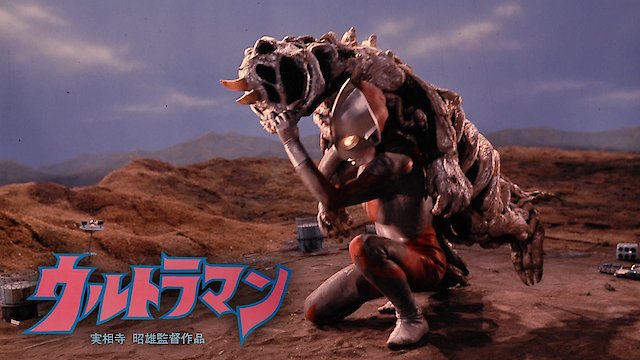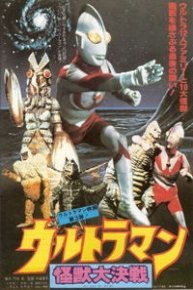
Ultraman
Where to Watch Ultraman

Ultraman, the 1979 film directed by the esteemed filmmaker and television producer, is a remarkable expansion of the iconic Ultraman franchise that had captured the imaginations of audiences since the first television series aired in the 1960s. The film brings together a talented cast, including Susumu Kurobe, Masaya Nihei, and Akiji Kobayashi, to create a thrilling narrative that is a blend of science fiction, action, and heartfelt moments.
The story unfolds in a world threatened by various monstrous entities that emerge from the depths of the earth and threatening the peace of humanity. The film introduces the pivotal character of Hayata, portrayed by Susumu Kurobe, who serves as a member of the Science Patrol, an elite group dedicated to protecting humanity from these colossal beings. Hayata is depicted not just as a brave and skilled officer but also as a compassionate individual dedicated to understanding the origins and motivations of these beasts, making him a relatable protagonist in a landscape often characterized by grand battles and simplistic villainy.
As the film progresses, the audience is introduced to Masaya Nihei's character, a fellow Science Patrol member who brings both camaraderie and conflict to the table. Their interactions provide a glimpse into the dynamics of teamwork within the Patrol. Additional tensions arise from the pressure of facing overwhelming odds against the monsters, creating a sense of urgency that fuels the narrative.
Akiji Kobayashi adds depth to the film, playing a senior officer within the Science Patrol whose dedication to safeguarding humanity is steeped in wisdom and experience. His character often serves as a grounding force amidst the chaos around them, imparting strategic advice and a calming presence when things become dire. The relationships between the characters are explored subtly, showcasing the bonds formed through adversity and shared purpose.
Ultraman himself is a captivating presence within the narrative. Although he is primarily seen in his heroic form when battling monstrous entities, the film delves into the mythology surrounding his character. We witness the transformation of Hayata into Ultraman—a process symbolizing the intertwining of human attributes with those of this alien protector. This metamorphosis reflects a deeper commentary on the duality of existence; as humanity wrestles with its vulnerabilities, they also embody strength, resilience, and the potential for extraordinary feats.
The design of the creatures in Ultraman is one of the film's standout features. Drawing from the rich tradition of tokusatsu (a Japanese genre featuring special effects), the monsters are intricately crafted and vividly depicted. Each creature possesses its unique characteristics and abilities, ranging from towering giants that wreak havoc upon cities to more grotesque beings that evoke fear and intrigue. The special effects, while reflecting the era’s technological limitations, resonate with a charm that pays homage to the handcrafted ethos of earlier kaiju films.
Action sequences are central to the film, executed with an energy that keeps viewers on the edge of their seats. The battles between Ultraman and the various monsters are not just spectacles of destruction; they are choreographed dances of valor and strategy, as both parties attempt to outmaneuver each other. The environments play a crucial role in these confrontations, with urban landscapes often transformed into battlegrounds that highlight the stakes involved.
Beyond the action, the film deeply explores themes of sacrifice, heroism, and humanity's responsibility towards its own survival. As the monsters threaten existence, there arises a pressing reflection on the environment and the choices humanity makes that may lead to its downfall. This ethical dimension adds emotional weight to the battle sequences, inviting the audience to continuously ponder the implications of the ongoing conflict.
The background score complements the film beautifully, enhancing the emotional depth of critical scenes while amplifying the tension during action sequences. The music is a blend of bold orchestration that signifies heroism and haunting melodies that underscore the tragedy of loss and devastation wrought by the monsters.
Ultraman, released in 1979, also serves as a bridge to contemporary issues, tackling the anxieties of the late 20th century, such as nuclear fear and environmental degradation. These themes resonate with modern audiences, making the film feel relevant even decades after its release.
In summary, Ultraman stands as a significant chapter in the beloved Ultraman franchise, skillfully blending thrilling monster battles with profound character development and themes that encourage reflection on the human condition. The performances of Susumu Kurobe, Masaya Nihei, and Akiji Kobayashi illuminate the narrative, and the film remains a cherished piece of cinematic history that fans continue to celebrate. Through its compelling storytelling and dynamic action, Ultraman captivates and inspires, making it a timeless entry in Japanese cinema that transcends its genre, uniting generations of viewers in its enduring legacy.
Ultraman is a Action, Adventure, Science Fiction movie released in 1979. It has a runtime of 102 min. Critics and viewers have rated it moderate reviews, with an IMDb score of 6.9..





















